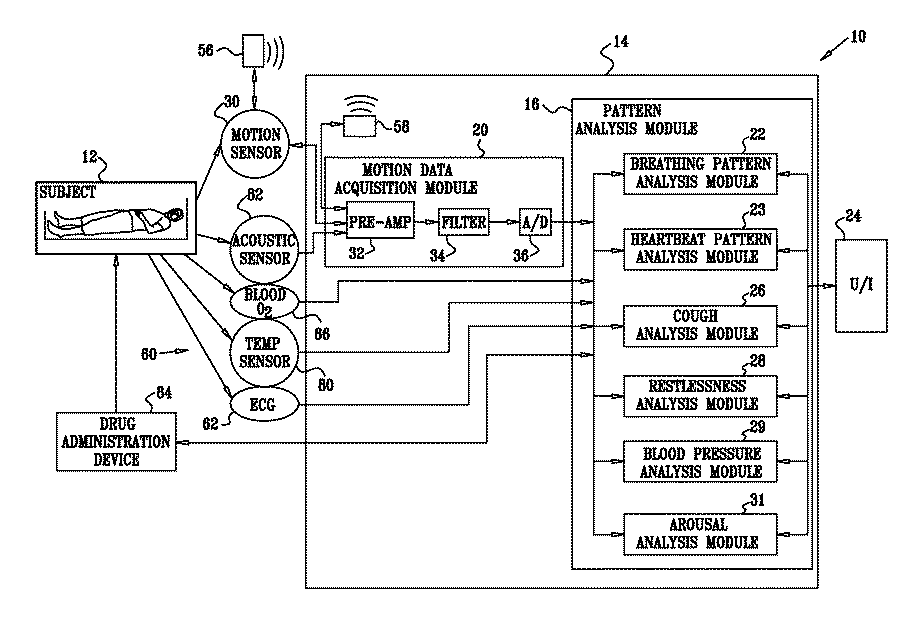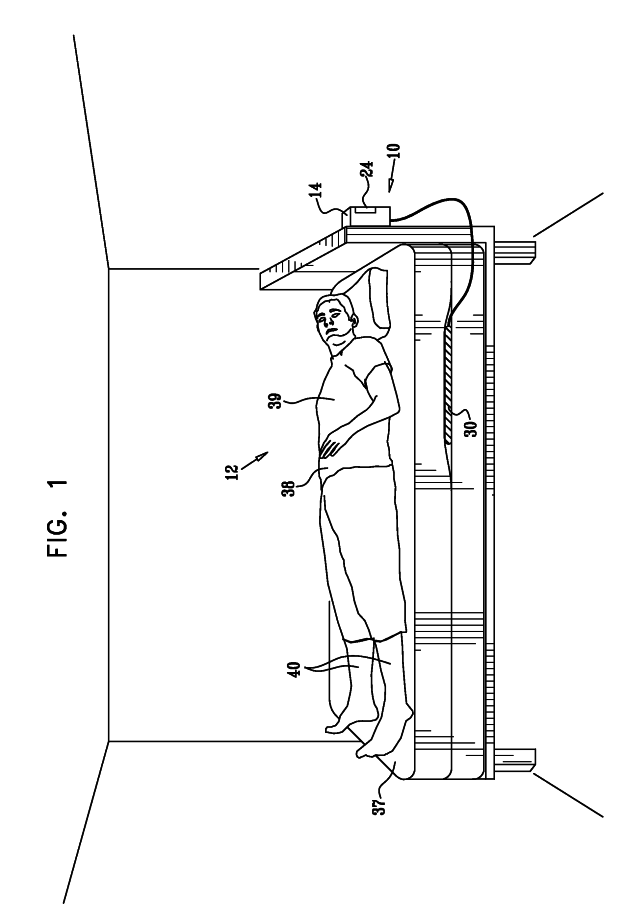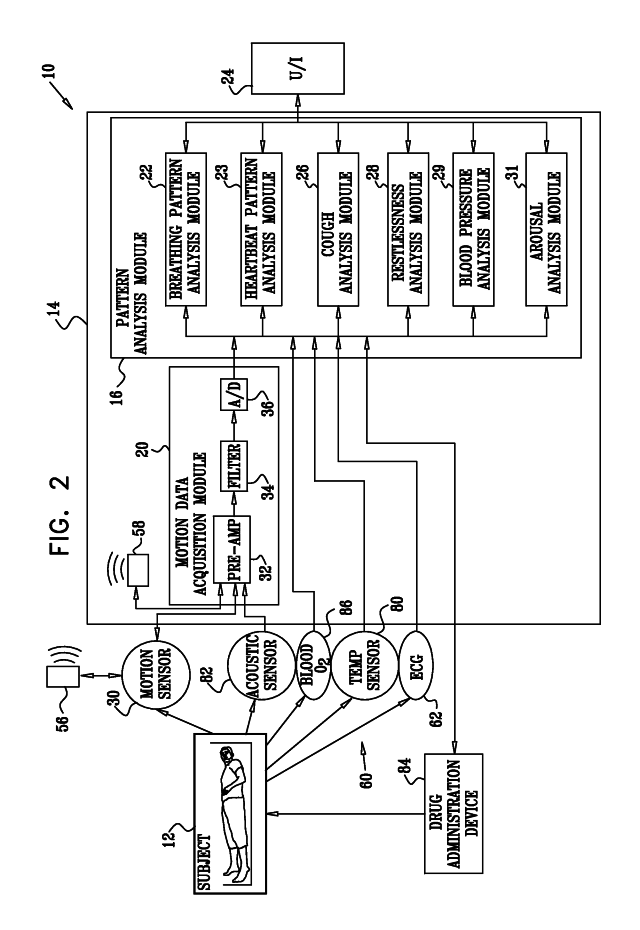Monitoring, predicting and treating clinical episodes
- Summary
- Abstract
- Description
- Claims
- Application Information
AI Technical Summary
Benefits of technology
Problems solved by technology
Method used
Image
Examples
example 1
[0884]Sensor A receives a compound signal comprised of a superposition of a signal s(t) and noise e(t): x(t)=s(t)+e(t).
[0885]Sensor B receives a projection of the noise denoted e′(t).
[0886]For this example, assume that Signal s(t) and noise e(t) are uncorrelated. The signal s(t) is extracted via adaptive elimination of a reconstructed noise signal from the compound signal plus noise x(t) received by sensor A, by minimizing the mean-square difference: MIN {[[s(t)+e(t)]−h(t)*e′(t)]̂2}, wherein h(t) denotes the impulse response of a linear time-invariant (LTI) filter.
[0887]Solving for h(t) yields the desired solution: s(t)=x(t)−h(t)*e′(t).
example 2
[0888]Sensors A and B receive different projections of a compound signal comprised of a superposition of a signal s(t) and noise e(t). For this example, assume that:
[0889]signal x(t) and noise e(t) are uncorrelated; and
[0890]signal and / or noise spectrum are known.
[0891]The axes are rotated to enhance signal and / or noise projections, until the desired characteristic spectrum is achieved, as follows (alpha and beta are incidence angles of the signal and noise, respectively):
Sensor A reads: S1(t)=x(t)*sin(alpha)+e(t)*sin(beta)
Sensor B reads: S2(t)=x(t)*cos(alpha)+e(t)*cos(beta)
[0892]The axes are rotated by gamma degrees, yielding:
S1′(t)=S1(t)*cos(gamma)+S2(t)*sin(gamma)
S2′(t)=S1(t)*sin(gamma)+S2(t)*cos(gamma)
[0893]The rotated signals S1′(t) and S2′(t) are calculated for all angles until noise contribution is cancelled (when gamma=pi-beta), and a scaled version of the desired signal is obtained:
S1’(t)=[x(t)*sin(alpha)+e(t)*sin(beta)]*cos(gamma)+[x(t)*cos(alpha)+e(t)*cos(beta)]*sin(gamma...
example 3
[0894]Identical sensors A and B are placed in close proximity and at the same orientation. Both sensors receive a superposition of near field signals and far field noise.
[0895]For this example, assume that:[0896]the distance between the sensors is significantly smaller than their distance from the noise source, but is of the order of magnitude of the distance from the signal source; and[0897]the signal source is comprised of a superposition of at least two differently oriented signal sources. For simplicity, the following description assumes two signal sources.
[0898]Let x1(t) and x2(t) denote the two near field signal sources.
[0899]Let e(t) denote the far field noise signal.
Sensor A reads: S1(t)=x1(t)+e(t)
Sensor B reads: S2(t)=x2(t)+e(t)
[0900]Then the difference signal is:
Sdiff=S1(t)-S2(t)=x1(t)-x2(t)+e(t)-e(t)=X1(t)-x2(t)
[0901]Thus, the far field signal is suppressed.
PUM
 Login to View More
Login to View More Abstract
Description
Claims
Application Information
 Login to View More
Login to View More - R&D
- Intellectual Property
- Life Sciences
- Materials
- Tech Scout
- Unparalleled Data Quality
- Higher Quality Content
- 60% Fewer Hallucinations
Browse by: Latest US Patents, China's latest patents, Technical Efficacy Thesaurus, Application Domain, Technology Topic, Popular Technical Reports.
© 2025 PatSnap. All rights reserved.Legal|Privacy policy|Modern Slavery Act Transparency Statement|Sitemap|About US| Contact US: help@patsnap.com



